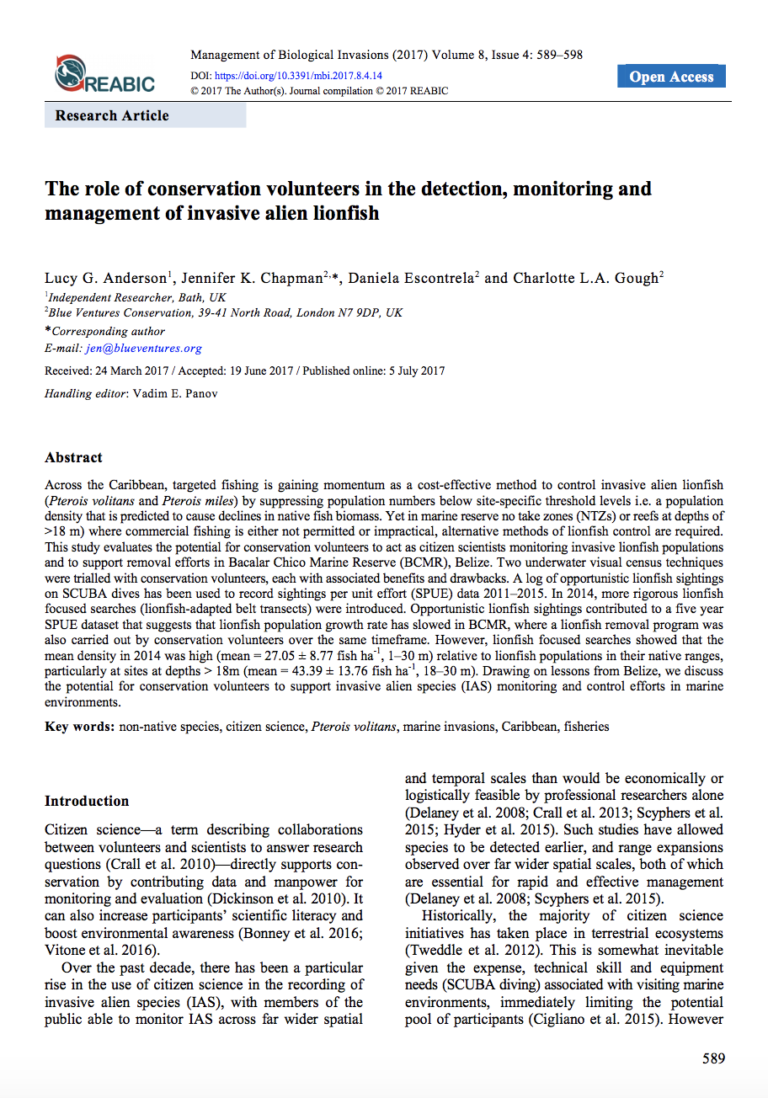Abstract:
Across the Caribbean, targeted fishing is gaining momentum as a cost-effective method to control invasive alien lionfish (Pterois volitans and Pterois miles) by suppressing population numbers below site-specific threshold levels i.e. a population density that is predicted to cause declines in native fish biomass. Yet in marine reserve no take zones (NTZs) or reefs at depths of >18 m) where commercial fishing is either not permitted or impractical, alternative methods of lionfish control are required. This study evaluates the potential for conservation volunteers to act as citizen scientists monitoring invasive lionfish populations and to support removal efforts in Bacalar Chico Marine Reserve (BCMR), Belize. Two underwater visual census techniques were trialled with conservation volunteers, each with associated benefits and drawbacks. A log of opportunistic lionfish sightings on SCUBA dives has been used to record sightings per unit effort (SPUE) data 2011–2015. In 2014, more rigorous lionfish focused searches (lionfish-adapted belt transects) were introduced. Opportunistic lionfish sightings contributed to a five year SPUE dataset that suggests that lionfish population growth rate has slowed in BCMR, where a lionfish removal program was also carried out by conservation volunteers over the same timeframe. However, lionfish focused searches showed that the mean density in 2014 was high (mean = 27.05 ± 8.77 fish ha-1, 1–30 m) relative to lionfish populations in their native ranges, particularly at sites at depths > 18m (mean = 43.39 ± 13.76 fish ha-1, 18–30 m). Drawing on lessons from Belize, we discuss the potential for conservation volunteers to support invasive alien species (IAS) monitoring and control efforts in marine environments.
Key words:
non-native species, citizen science, Pterois volitans, marine invasions, Caribbean, fisheries

















